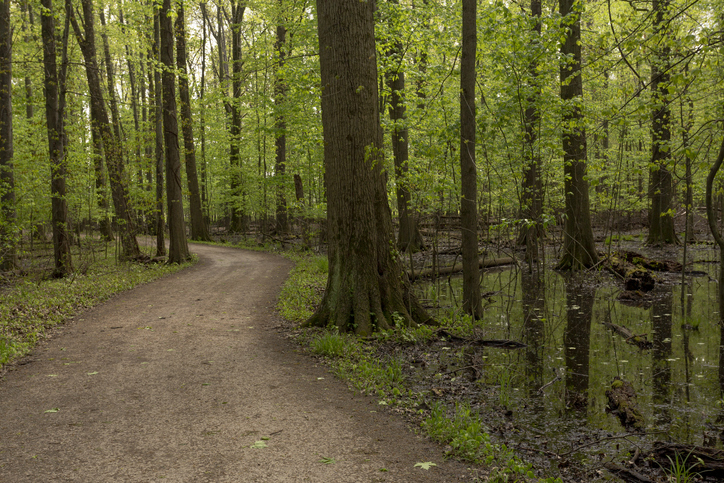First-Time Composter Learns to Deal with the Stink
December 4, 2020
I’ve been working at ecoRI News for a little over a year now. During my time here, I’ve written about pollution, land use, gentrification, and even visited a bug quarantine facility. I’ve learned a lot and try to practice what I preach by staying involved in local politics, supporting land conservation, and keeping reusable bags stashed in my car.
But the one thing I’ve been meaning to do and haven’t is compost. It’s intimidating. I live in a 600-square-foot apartment, and I’m a fanatic cook who cuts and peels vegetables with the dexterity of a Samurai; I leave lots of food scrap in my wake.
The prospect of filling a bucket with the dregs of my cutting board felt Sisyphean, or to put it in terms we all might better understand, like cars backing up on Interstate 95 during rush hour: a lot of stuff in a little amount of time.
But I decided I should give it a go. I got myself a bucket from the Barrington Farm School — the nonprofit founded by ecoRI News reporter Tim Faulkner accepts food scrap for compost — and got started.
The first week was great. With every eggshell and potato peel that I tossed into the bucket, and with every snap of the lid, I felt a renewed sense of purpose. I was doing the right thing!
Three weeks later, I was still cramming cabbage leaves, apple cores, and onion skins into the bucket. What surprised me was that it didn’t really smell. Sure, there were a few fruit flies that had made themselves at home in my kitchen, but all things considered, it wasn’t so bad.
Another week went by, and my boyfriend asked when I was going to empty the bucket. “It’s a bit … full,” he said, eyeing the lid that, by this point, was popping off.
A week later, I finally lugged the bucket into my car and over to the Barrington Farm School. The drive was uneventful, but as I made the turn onto Wampanoag Trail, the faint smell of rotting vegetables mixed with coffee grounds started to fill my car. I sped up, made a few more turns, and finally arrived.
Thankfully, no one was there to see me pop the lid on the bucket and dump the slimy, wretched mass of rotten organic matter into the “food scraps” bin. In finale, two cabbage leaves at the bottom flopped into the bin like gray, deflated lungs, and I quickly popped the lid back on my bin and high-tailed it out.
Back home, I rinsed the bucket with a hose and let it sit outside overnight with the lid off, thinking it would help rid the rotten-potato smell.
But the next day, it still stunk. We left a box of baking soda inside, scrubbed it with bleach, and even tried using Scrubbing Bubbles. Nothing worked.
Since then, while the bucket is in the kitchen, the lid is firmly on, and I’ve been afraid to even crack that baby open even a smidge.
What the heck happened? Why was my first effort so gosh darn stinky? Would I ever be able to compost again?
To figure out where I went wrong, I contacted two local composting experts: Katie Murphy, who runs a composting program for Groundwork Rhode Island, and Miranda Lachman from Bootstrap Compost.
“There’s lots of things that can cause a bucket to smell,” Murphy wrote in an email. She went on to note that while there’s no surefire way to avoid every stench, there are ways to prevent too much stink from building up.
“The first thing you can do is freeze your compost in a paper bag for as long as you can before you put it in the bucket,” she wrote. “That means the decomposition process will start whenever you take it out of the freezer rather than right away. I have some customers who freeze their compost until the night before pickup and then put it out in their bucket, and it’s usually only just begun to defrost when I pick it up.”
Murphy also suggested balancing out moist food scrap with brown material, such as leaves or sawdust.
“When the moisture content in your compost is over a certain amount, oxygen can’t get in and the compost goes anerobic, creating methane. If your compost smells sulfuric, this is probably what’s going on,” she wrote. “Any kind of ‘brown’ you can mix into the bucket helps with this — dry leaves, shredded paper — but the most effective additive, if you can get some, is sawdust. Since sawdust is spectacularly dry, a little bit of it goes a long way in drying out the compost. You can also use sawdust to soak up stinky liquid in your bucket after you empty it. I call this ‘dry-cleaning’ the bucket.”
Lachman of Bootstrap Compost suggested padding the bottom of the container with brown materials such as coffee grounds, shredded newspaper, or leaves. But in the end, she noted, sometimes your container has just soaked up so much stink that it’s time to let it go.
“Sometimes it’s just time to replace it and start from scratch,” Lachman wrote in an email. “At the end of the day, garbage cans and recycling bins smell after a while and your compost bucket is no different.”
Since my container is somewhat virginal, I think it probably still has a few more rounds of composting left in it. Freezing my food waste probably isn’t an option, since my freezer is full to the brim with various rare (banana leaves) and mundane (butter) ingredients and can’t handle anything more. But instead of throwing in the towel, I think I’ll take the offered advice and try to stock up on sawdust and other brown materials to lessen the stench.
After all, in the words of Vietnamese Buddhist monk Thích Nhất Hạnh, “No mud, no lotus. Both suffering and happiness are of an organic nature, which means they are both transitory; they are always changing. The flower, when it wilts, becomes the compost. The compost can help grow a flower again.”
Maybe my stinky bucket is transitory as well.
East Providence, R.I., resident Grace Kelly is an ecoRI News reporter.
Categories
Join the Discussion
View CommentsRecent Comments
Leave a Reply
Your support keeps our reporters on the environmental beat.
Reader support is at the core of our nonprofit news model. Together, we can keep the environment in the headlines.
We use cookies to improve your experience and deliver personalized content. View Cookie Settings




My compost bucket is a cut-off gallon milk-jug that sits in a corner of the sink. There are more empties under the sink in case it’s rainy & I’m not moved to carry it to the garden. Every day I take it out and dump it in the vegetable garden, & rinse it in a bucket of rainwater that conveniently sits outside the door. In summer, when the tomatoes are tall, you’d never know there was compost there. The worms have a feast, and it biodegrades in no time. In town, maybe having a small trench alongside a bush, or where a flower bed will be next spring, and as you dump in something, push some of those leaves on top when the ground freezes. I used to keep moving the trench, lifting shovel-fulls of dirt, lengthening or widening the trench, day by day. Garden next year was rich for all the goodies it accumulated all winter, and the worms were right there when it got warm. I cringe to think of a bucket you try to use for a MONTH! There must be a better way!! Good luck finding a way that works for you. And leave that bucket outside the door….. 🙂
It’s tricky for sure! I live in the
“ country” and have 3 compost “heaps” but feared it was attracting critters. So I use a tumbler to get the process started . I have issues with smell and fruit flies in my counter top container also, so now I use compostable green bags to collect the scraps in the fridge or freezer until I take them out. The “compostable” bags did not really seem to break down so I do end up putting them in my regular trash after emptying them. In the city you don’t want to attract rodents so not many options for outside “ heaps”! Gardeners Supply Catalog does sell indoor composting systems that you use with red wiggles worms . ( sold separately)…I have not tried this because I’m still concerned about fruit flies and smell!!!
Perhaps you can layer your scraps with pieces of cardboard? If not, I guess you will just have to buy another freezer!!! 😉
Good luck and keep up the good work! Thank you for caring about the planet!
I put a layer of black/ white newspaper in the bottom. But the simple solution is to empty it more frequently
Treat your food scrap as a perishable item, just like produce, meat and cheese. Refrigerate or freeze, in a convenient container for your personal use. Plastic bags, paper, resealable containers are all acceptable. Collect until you feel you’ve reached your capacity (e.g. a full container – or two), and then empty, preferably, before the scraps become moldy. Ideally, each week, you would take this directly to your, composter, your neighborhood Community Compost site or Drop-off Depot. Saw dust is not easy to come by, but leaves are EVERYWHERE! Collect some leaves each fall, and store in a dry location. When you empty your bucket, wipe it out with a few handfuls of leaves. At the Community Compost Depot, Inc. we call this a biological cleaning, or dry scouring/dry cleaning, like Katie, who used to work for us at the Community Compost Depot, Inc. mentioned. Once "cleaned" add a good cushion of dry leaves back to the bottom of your 5-Gallon pail, and have a reserve ready to top off with each time you add food scraps to your bucket. This will help absorb moisture, keep flies down, and will minimize odors. Your bucket smells because of the moisture content, and because you seal the lid tightly. You can collect food scraps indefinitely, without smells, with enough leaf or other dry fiber, and by venting the lid to allow for some air flow – but it’s a skill, so you’ll have to experiment to get it right. I use an open paper bag, and desiccate my scraps before bringing them to the The Community Compost Depot at Frey Gardens. We run the state’s first and only Urban Composting Facility, and composted a quarter of a million pounds of organics in our city compost system. Composting can happen anywhere, with the right knowledge and training. Communities can take charge fo their own scraps and do this themselves: contact us at [email protected] and we can help you figure that out.